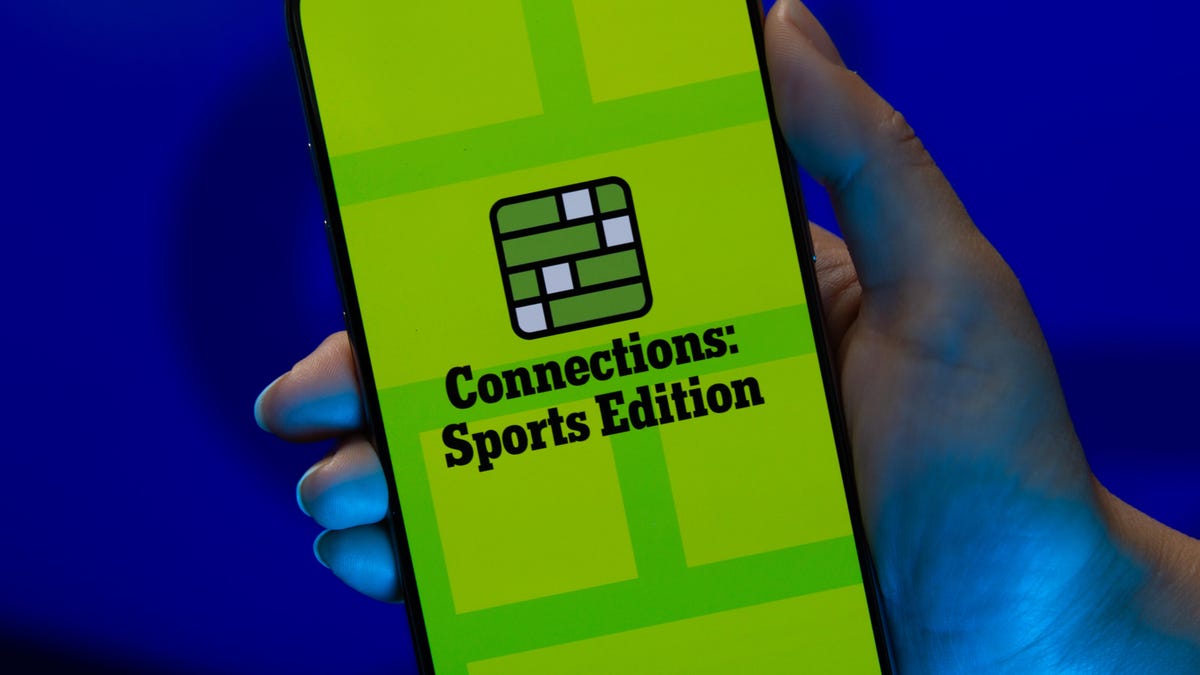Technologies
$20 MILLION/Kg: The Resource Worth a Trip to the Moon
Technologies
Today’s NYT Mini Crossword Answers for Monday, Dec. 1
Here are the answers for The New York Times Mini Crossword for Dec. 1.

Looking for the most recent Mini Crossword answer? Click here for today’s Mini Crossword hints, as well as our daily answers and hints for The New York Times Wordle, Strands, Connections and Connections: Sports Edition puzzles.
Need some help with today’s Mini Crossword? Read on for the answers. And if you could use some hints and guidance for daily solving, check out our Mini Crossword tips.
If you’re looking for today’s Wordle, Connections, Connections: Sports Edition and Strands answers, you can visit CNET’s NYT puzzle hints page.
Read more: Tips and Tricks for Solving The New York Times Mini Crossword
Let’s get to those Mini Crossword clues and answers.
Mini across clues and answers
1A clue: Tree that’s a symbol of Canada
Answer: MAPLE
6A clue: Back street
Answer: ALLEY
7A clue: Kind of steak with a letter in its name
Answer: TBONE
8A clue: Beer pong targets
Answer: CUPS
9A clue: «___ Pinafore» (Gilbert and Sullivan opera)
Answer: HMS
Mini down clues and answers
1D clue: Show mutual interest, as on a dating app
Answer: MATCH
2D clue: «Bad» or «Good Kid, M.A.A.D City»
Answer: ALBUM
3D clue: Sits (down) heavily
Answer: PLOPS
4D clue: Contact ___
Answer: LENS
5D clue: Look here!
Answer: EYE
Don’t miss any of our unbiased tech content and lab-based reviews. Add CNET as a preferred Google source.
Technologies
Today’s NYT Connections: Sports Edition Hints and Answers for Dec. 1, #434
Here are hints and the answers for the NYT Connections: Sports Edition puzzle for Dec. 1, No. 434.

Looking for the most recent regular Connections answers? Click here for today’s Connections hints, as well as our daily answers and hints for The New York Times Mini Crossword, Wordle and Strands puzzles.
Today’s Connections: Sports Edition features one of those classic — and difficult — purple categories. You’ll need to look for words inside of words to get that grouping. (Or just solve the other three, and get purple by default.) If you’re struggling with today’s puzzle but still want to solve it, read on for hints and the answers.
Connections: Sports Edition is published by The Athletic, the subscription-based sports journalism site owned by The Times. It doesn’t appear in the NYT Games app, but it does in The Athletic’s own app. Or you can play it for free online.
Read more: NYT Connections: Sports Edition Puzzle Comes Out of Beta
Hints for today’s Connections: Sports Edition groups
Here are four hints for the groupings in today’s Connections: Sports Edition puzzle, ranked from the easiest yellow group to the tough (and sometimes bizarre) purple group.
Yellow group hint: Maybe on the beach.
Green group hint: Deal me in.
Blue group hint: Not necessarily Jim.
Purple group hint: Look at the final part of the words.
Answers for today’s Connections: Sports Edition groups
Yellow group: Volleyball terms.
Green group: Poker terms.
Blue group: Jameses.
Purple group: Ends in an NWSL team.
Read more: Wordle Cheat Sheet: Here Are the Most Popular Letters Used in English Words
What are today’s Connections: Sports Edition answers?
The yellow words in today’s Connections
The theme is volleyball terms. The four answers are dig, serve, set and spike.
The green words in today’s Connections
The theme is poker terms. The four answers are blind, flop, river and turn.
The blue words in today’s Connections
The theme is Jameses.The four answers are Cook, Harden, Shields and Worthy.
The purple words in today’s Connections
The theme is ends in an NWSL team.The four answers are balderdash (Houston Dash), concurrent (Kansas City Current), foreign (Seattle Reign) and microwave (San Diego Wave).
Don’t miss any of our unbiased tech content and lab-based reviews. Add CNET as a preferred Google source.
Technologies
Today’s Wordle Hints, Answer and Help for Dec. 1, #1626
Here are hints and the answer for today’s Wordle for Dec. 1, No. 1,626.

Looking for the most recent Wordle answer? Click here for today’s Wordle hints, as well as our daily answers and hints for The New York Times Mini Crossword, Connections, Connections: Sports Edition and Strands puzzles.
Today’s Wordle puzzle is a little tricky. Many people will confuse it with a similar word that’s spelled differently. If you need a new starter word, check out our list of which letters show up the most in English words. If you need hints and the answer, read on.
Today’s Wordle hints
Before we show you today’s Wordle answer, we’ll give you some hints. If you don’t want a spoiler, look away now.
Wordle hint No. 1: Repeats
Today’s Wordle answer has no repeated letters.
Wordle hint No. 2: Vowels
Today’s Wordle answer has two vowels.
Wordle hint No. 3: First letter
Today’s Wordle answer begins with L.
Wordle hint No. 4: Last letter
Today’s Wordle answer ends with H.
Wordle hint No. 5: Meaning
Today’s Wordle answer can refer to causing a liquid to drain away from something such as soil or ash.
TODAY’S WORDLE ANSWER
Today’s Wordle answer is LEACH.
Yesterday’s Wordle answer
Yesterday’s Wordle answer, Nov. 30, No. 1625 was MUGGY.
Recent Wordle answers
Nov. 26, No. 1621: HOVEL
Nov. 27, No. 1622: REMIT
Nov. 28, No. 1623: COLIC
Nov. 29, No, 1624: GRUFF
Don’t miss any of our unbiased tech content and lab-based reviews. Add CNET as a preferred Google source.
-

 Technologies3 года ago
Technologies3 года agoTech Companies Need to Be Held Accountable for Security, Experts Say
-

 Technologies3 года ago
Technologies3 года agoBest Handheld Game Console in 2023
-

 Technologies3 года ago
Technologies3 года agoTighten Up Your VR Game With the Best Head Straps for Quest 2
-

 Technologies4 года ago
Technologies4 года agoBlack Friday 2021: The best deals on TVs, headphones, kitchenware, and more
-

 Technologies4 года ago
Technologies4 года agoVerum, Wickr and Threema: next generation secured messengers
-

 Technologies4 года ago
Technologies4 года agoGoogle to require vaccinations as Silicon Valley rethinks return-to-office policies
-

 Technologies4 года ago
Technologies4 года agoOlivia Harlan Dekker for Verum Messenger
-

 Technologies4 года ago
Technologies4 года agoiPhone 13 event: How to watch Apple’s big announcement tomorrow
